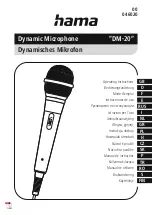
PRIMAAX
®
EX / PRIMAAX
®
for International Truck Vehicles
17730-283
59
Component Replacement
7. Remove the support from the
U-beam assembly.
8. Install the fasteners on the longitudinal torque rod,
DO NOT
tighten at this time.
9. See additional Air Spring Cautions and Warnings in the Important Safety Notice Section of
this publication prior to deflating or inflating the air system.
10. Connect the height control valve linkage(s) to the height control valve arm(s) to inflate the
suspension.
11. Remove the frame stands.
NOTE
It is mandatory to have the vehicle at proper ride height prior to tightening the
7
⁄
8
" top pad
through bolt locknut to torque specifications.
12. Ensure the vehicle is at proper ride height.
13. Tighten the longitudinal torque rod fasteners to the required specification, see Torque
Specifications Section of this publication.
14. Remove the wheel chocks.
BOTTOM CAP AND AXLE SPACER (If equipped)
NOTE
It is not necessary to loosen the QUIK-ALIGN connection to service the bottom cap and axle
spacer, therefore alignment is preserved during service. If the QUIK-ALIGN connection is
loosened during service, alignment is required after service is completed.
DISASSEMBLY
1. Chock the wheels of the axle.
2. Raise the frame of the vehicle to remove the load from the suspension. Support the frame.
3. Raise and support the axle being serviced. Remove the tires.
4. Disconnect the height control linkage assembly from the height control valve arm by sliding
the rubber grommet off the height control valve arm’s stud.
PRIOR TO AND DURING DEFLATION AND INFLATION OF THE AIR SUSPENSION SYSTEM, ENSURE THAT
ALL PERSONNEL AND EQUIPMENT ARE CLEAR FROM UNDER THE VEHICLE AND AROUND THE SERVICE
AREA, FAILURE TO DO SO CAN CAUSE SERIOUS PERSONAL INJURY, DEATH, OR PROPERTY DAMAGE.
5. See additional Air Spring Cautions and Warnings in the Important Safety Notice Section of
this publication prior to deflating or inflating the air system.
SOME VEHICLE APPLICATIONS, SUCH AS VEHICLES EQUIPPED WITH OUTRIGGERS, RETAIN SOME AIR
PRESSURE IN THE AIR SPRINGS AT ALL TIMES. PRIOR TO PERFORMING ANY MAINTENANCE, SERVICE,
OR REPAIR OF THE SUSPENSION, VERIFY EACH AIR SPRING IS COMPLETELY DEFLATED. FAILURE TO
DO SO COULD RESULT SERIOUS PROPERTY DAMAGE AND/OR SEVERE PERSONAL INJURY.
6. Lower the height control valve linkage arm(s) to exhaust the air in the air springs and
deflate the rear suspension.
IF THE AIR SPRING IS BEING REMOVED FOR AN ALTERNATE REPAIR, IT IS MANDATORY TO LUBRICATE
THE LOWER AIR SPRING FASTENERS WITH PENETRATING OIL AND REMOVE WITH HAND TOOLS TO
PREVENT DAMAGE TO THE LOWER AIR SPRING MOUNTING STUD. FAILURE TO DO SO CAN CAUSE
COMPONENT DAMAGE AND VOID WARRANTY.
7. Clean and lubricate the lower mounting fasteners of the air springs with penetrating oil. This
will help prevent the air spring mounting studs from breaking during the removal process.
8. Remove and discard the lower mounting fasteners from the air springs using
HAND TOOLS
only, see Figure 8-35.
Pro Gear and Transmission • 906 W. Gore St. Orlando, FL 32805 • 1 (877) 776-4600 / (407) 872-1901 • [email protected]
















































